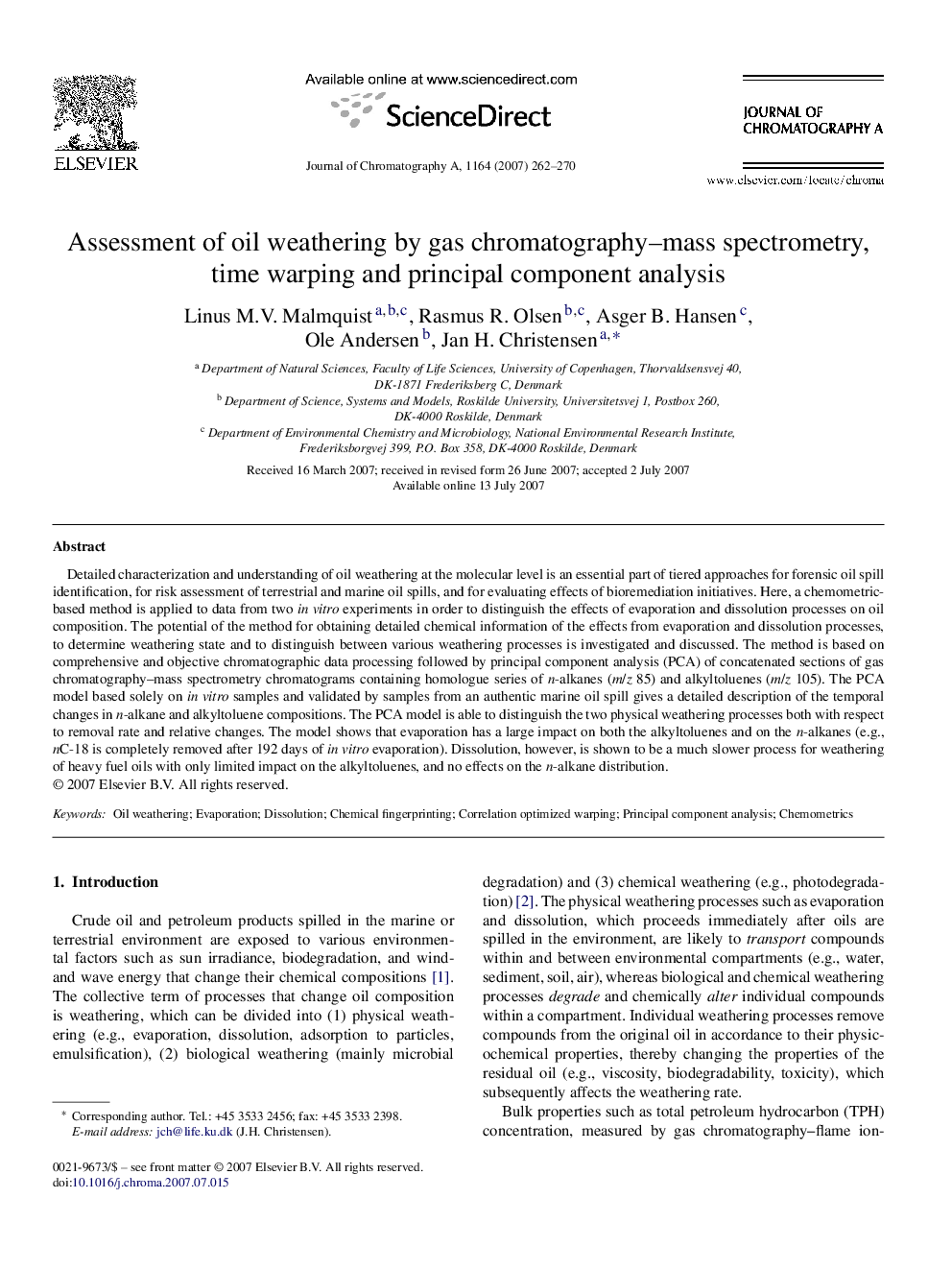| Article ID | Journal | Published Year | Pages | File Type |
|---|---|---|---|---|
| 1208831 | Journal of Chromatography A | 2007 | 9 Pages |
Detailed characterization and understanding of oil weathering at the molecular level is an essential part of tiered approaches for forensic oil spill identification, for risk assessment of terrestrial and marine oil spills, and for evaluating effects of bioremediation initiatives. Here, a chemometric-based method is applied to data from two in vitro experiments in order to distinguish the effects of evaporation and dissolution processes on oil composition. The potential of the method for obtaining detailed chemical information of the effects from evaporation and dissolution processes, to determine weathering state and to distinguish between various weathering processes is investigated and discussed. The method is based on comprehensive and objective chromatographic data processing followed by principal component analysis (PCA) of concatenated sections of gas chromatography–mass spectrometry chromatograms containing homologue series of n-alkanes (m/z 85) and alkyltoluenes (m/z 105). The PCA model based solely on in vitro samples and validated by samples from an authentic marine oil spill gives a detailed description of the temporal changes in n-alkane and alkyltoluene compositions. The PCA model is able to distinguish the two physical weathering processes both with respect to removal rate and relative changes. The model shows that evaporation has a large impact on both the alkyltoluenes and on the n-alkanes (e.g., nC-18 is completely removed after 192 days of in vitro evaporation). Dissolution, however, is shown to be a much slower process for weathering of heavy fuel oils with only limited impact on the alkyltoluenes, and no effects on the n-alkane distribution.
